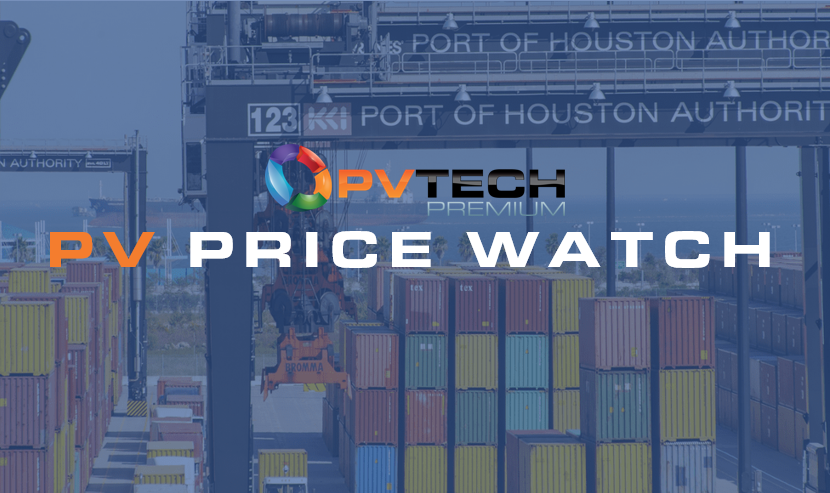
Global shipping rates for freight containers are in “free fall” as supply outstrips demand following 18 months of exorbitant prices, which have mainly been due to demand unleashed during the COVID-19 pandemic and vessel supply shortages.
When PV Tech Premium briefed our readers on shipping and logistic costs in February, freight rates from Asia to Europe were roughly US$14,500 (US$16,000 for the UK). Asia to the US West coast was about US$9,500 and to the East coast it was in the range of US$11,000, according to data from S&P Global Commodity Insights.
Try Premium for just $1
- Full premium access for the first month at only $1
- Converts to an annual rate after 30 days unless cancelled
- Cancel anytime during the trial period
Premium Benefits
- Expert industry analysis and interviews
- Digital access to PV Tech Power journal
- Exclusive event discounts
Or get the full Premium subscription right away
Or continue reading this article for free
Two months ago (6 July), shipping a 40-foot container from Asia to Europe would have cost you US$9,600, while Asia to the US East and West coast was US$9,700 and US$7,100, respectively.
Now, however, those rates have dropped to US$6,800 for Asia to Europe, and US$8,450 and US$4,200 for the US’ East and West coast respectively, according to data shared with PV Tech Premium.
George Griffiths, managing editor for global container freight at S&P Global Commodity Insights, told this site that, somewhat surprisingly, rates are not expected to increase for the rest of year. This is because the usual peak demand period of early September has not caused upward pressure of freight rates, nor has the upcoming so-called ‘golden week’ holiday in China at the end of the month.
The falling prices have been caused, Griffiths said, by low global demand amid concerns around the state of the economy as well as fears around the impact of the current energy crisis. Moreover, pent up demand unleashed during the COVID-19 pandemic has now abated as people and businesses tighten their belts in preparation for a difficult winter.
At the start of the pandemic, stockpiles were low and warehouses empty. This is not the case now, says Griffiths, with supply levels much healthier than back in March 2020.
As a result of the lower demand, prices are dropping week after week, said Griffiths, adding that “we are now in a period of oversupply – nobody is thinking rates will go up between now and the end of the year.”
Another factor to consider is that many couriers entered the market a year ago, attracted by the extortionate prices shipping companies were charging. These entrants, however, are now just trying to break even and there is a certain amount of price undercutting in the market at present, said Griffiths.
Moving forward, it appears as though prices will continue to fall until the end of the year and into 2023, when a lot more capacity is expected to come online. Currently, the order book for container carriers over the next 18 months stands at 27% of current capacity, suggesting further price reduction into 2023 as supply continues to outstrip demand. While this figure is 27% in terms of current capacity, it is just 10% when it comes to ship numbers, meaning the industry is building larger vessels to carry goods.
That said, prices have not been the only issue causing chaos over the past 18 months. Delays – caused by a lack of workers at ports and COVID-19 outbreaks – have been a thorn in the side of PV product importers with tight schedules. And while delays are certainly down on six months ago, a new wave of industrial action threatens to cause further delays across key ports, especially in Europe with strikes occurring in England and German, with the threat also looming across the US.






